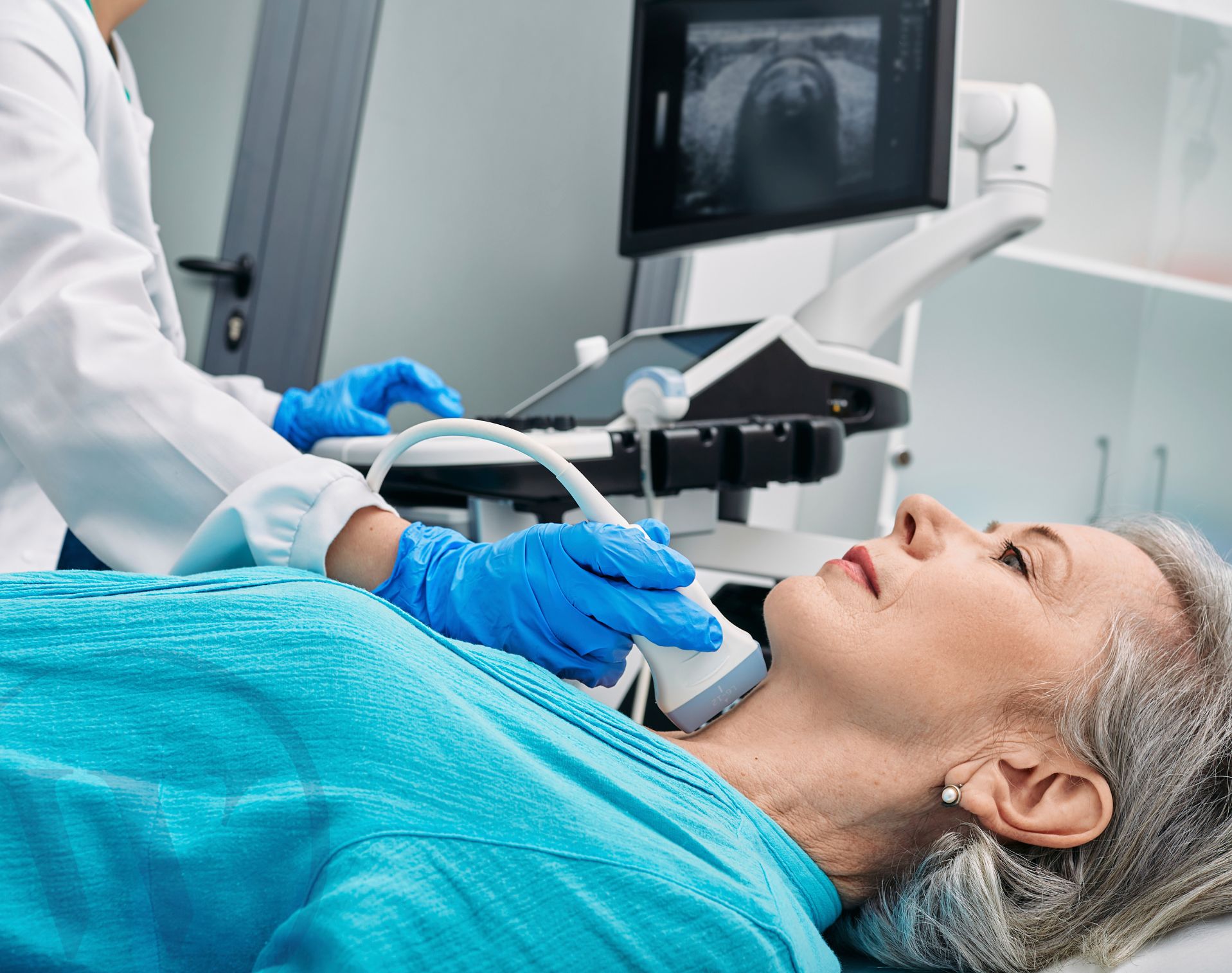Salivary Gland Ultrasound Scan
Salivary gland ultrasound is a non-invasive, pain-free imaging test used in the diagnosis and management of conditions affecting the salivary glands.

What is a salivary gland ultrasound?
Salivary gland ultrasound, or salivary gland ultrasonography, is a non-invasive, pain-free test that provides detailed images of the soft tissues of the salivary glands.
It’s used to evaluate the salivary glands and accurately diagnose disorders and conditions such as cysts, tumours, and lesions. It can also be used to monitor conditions during and after treatment.
At Welbeck, salivary gland ultrasound scans are performed by our maxillofacial experts in our dedicated Oral & Facial Health centre.
When is a salivary gland ultrasound recommended?
A maxillofacial specialist may arrange for you to have a salivary gland ultrasound if you present with any of the following symptoms:
- swelling in your mouth, in front of your ears, on the side of your cheeks or under your jaw
- painful in your mouth or face that worsens when talking or eating
- difficulty swallowing or speaking
- a dry mouth
- an unpleasant taste in your mouth
Conditions diagnosed by ultrasound scans
The symptoms above could indicate one of the following salivary gland conditions, all of which can be identified via an ultrasound scan:
- salivary gland stones
- benign (non-cancerous) or malignant (cancerous) tumours
- salivary gland cysts
- salivary glands or blockages
- salivary gland lesions
- salivary gland inflammation
- infections or abscesses
What does a salivary gland ultrasound involve?
At Welbeck, ultrasound scans are performed by our skilled and experienced maxillofacial consultants. To begin the scan, they will apply some gel to the areas of your face and jaw that are being scanned. They will then gently glide a small, smooth probe over your skin, and live images will appear on a nearby screen.
Depending on which glands are being evaluated, your consultant will move the probe over several areas of your face and jaw. To assess your parotid glands, the probe will be moved over the angle of your jaw and in front of your ears. For the submandibular glands, they will move the probe over the mid-portion of your jaw. For the sublingual glands, they will move the probe underneath your chin.
They will scan both the right and left sides of your face to compare the size and shape of the glands on each side.
Ultrasound for salivary gland tumours
With an ultrasound scan, a maxillofacial specialist will be able to identify if a salivary gland tumour is present. Unfortunately, what the scan cannot confirm is whether a tumour is benign (non-cancerous) or malignant (cancerous).
If a tumour is found, your specialist will need to perform a biopsy. This involves inserting a very fine needle into the tumour to collect a sample of cells to be tested in the lab.
Ultrasound-guided treatments
If your specialist identifies a salivary gland cyst or abscess, they may need to perform an ultrasound-guided treatment. This involves using ultrasound imaging to guide a needle into the glands to aspirate or drain out fluid.
What are the risks of a salivary gland ultrasound scan?
Ultrasounds are an incredibly useful and very safe imaging test that allows our maxillofacial specialists to see a clear and accurate picture of what’s going on inside your body in real-time. For patients, ultrasound scans are fast, non-invasive, and cause no pain.
How to prepare for a salivary gland ultrasound scan
An ultrasound scan is a very simple diagnostic test. In most cases, there is no preparation needed. Your consultant will let you know in good time if there is anything you need to do before your scan.
Recovery and aftercare
When used for diagnostic purposes, a salivary gland ultrasound scan is non-invasive, so there is no recovery time or aftercare needed.
If a biopsy or treatment is required, recovery time and aftercare may be necessary. Your consultant will provide you with the relevant information depending on the type of procedure you’re having.
Salivary gland ultrasound cost
Please contact our Oral & Facial Health centre for pricing information.
Why choose Welbeck?
At Welbeck, our maxillofacial specialists are experts in their field and are dedicated to providing world-class care to every patient.
With access to colleagues across other specialities, our consultants are also able to refer within the Welbeck ecosystem if needed to ensure you receive the best possible treatment as quickly as possible, all under one roof.
All appointments, testing, treatment, and follow-up appointments take place within our state-of-the-art facilities, enabling us to deliver accurate diagnostics and advanced treatments.
Book your private consultation
Your health is important to us, so we strive to offer same-day appointments whenever possible.
Our consultants are recognised by the major health insurance companies. If you have private health insurance, your treatment at Welbeck can begin once you have obtained authorisation. We also provide care to self-paying patients. Learn more about the different payment options at Welbeck.
FAQs
Is a salivary gland ultrasound scan painful?
A little pressure may be applied to your neck as the ultrasound probe is over your skin. This shouldn’t hurt, but it can feel a little uncomfortable if your glands are swollen or inflamed.
Are there alternative imaging options?
In some cases, an MRI may be needed to gain another view of the salivary glands. If your consultant suspects you have a salivary duct or gland disorder, they may also need to perform a sialogram, which uses X-rays and contrast dye to provide a detailed view of the salivary glands and ducts.
